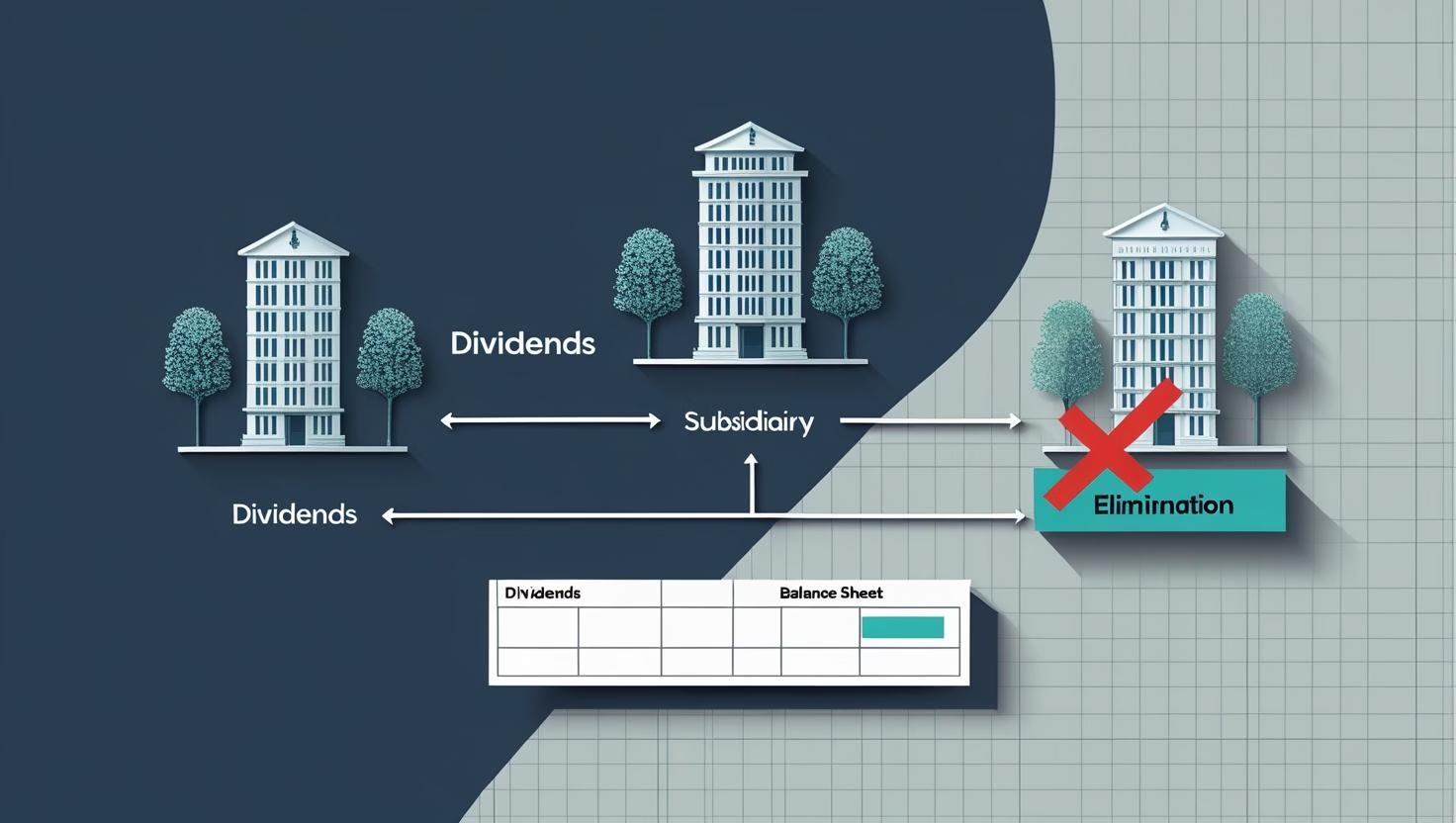Why Intercompany Dividends Must Be Eliminated
When consolidating financial statements across multiple entities within a group, one essential adjustment is the elimination of intercompany dividends. These are dividends paid by one subsidiary to another entity within the same group—such as a holding company or another subsidiary.
While dividends are legitimate transactions between companies, they must be eliminated during consolidation because they do not represent external income for the group. Including intercompany dividends would result in overstating the group’s revenue or retained earnings, misrepresenting its actual financial performance and position to shareholders, auditors, and regulators.
In other words, what is income to one group company is an expense—or distribution of profit—from another. From a group perspective, it’s simply a movement of funds within the same economic entity.
What Does the Elimination Involve?
The process of eliminating intercompany dividends depends on the structure of the group and how the dividends are recorded in each company’s financials.
Let’s look at a simple example:
- Subsidiary A declares a dividend of $100,000 to Holding Company B.
- Subsidiary A records a debit to Retained Earnings and a credit to Dividend Payable.
- Holding Company B records a debit to Dividend Receivable (or Bank) and a credit to Dividend Income.
During consolidation, both entries must be eliminated:
- Dividend Income must be removed from the consolidated Profit & Loss statement.
- Dividend Payable/Receivable balances (if they still exist at reporting date) must also be eliminated from the consolidated Balance Sheet.
Consolidation Entry Example:
| Account | Debit | Credit |
|---|---|---|
| Dividend Income (Holding Company) | 100,000 | |
| Retained Earnings (Subsidiary) | 100,000 |
If the dividend has not yet been paid, then the payable/receivable must be removed from the balance sheet:
| Account | Debit | Credit |
|---|---|---|
| Dividend Payable (Subsidiary) | 100,000 | |
| Dividend Receivable (Holding Company) | 100,000 |
Real-Life Scenarios and Complexity
Scenario 1: Partial Ownership and Non-controlling Interest (NCI)
When a parent owns less than 100% of a subsidiary, only the group’s portion of the dividend income needs to be eliminated. The portion that relates to non-controlling interest (NCI) is still valid and should remain.
For example, if the parent owns 80% of Subsidiary C and Subsidiary C pays a $50,000 dividend, only $40,000 (80%) would be eliminated. The remaining $10,000 is attributable to NCI and stays in the consolidated income.
Scenario 2: Tiered Ownership Structures
In more complex group structures with multiple layers (e.g., Subsidiary D pays a dividend to Intermediate Holding E, which is owned by the Ultimate Parent F), elimination must be handled at the correct level. Systems like BrizoSystem allow for this kind of granularity and can apply eliminations accurately across different levels of the hierarchy.
Scenario 3: Timing Differences
There may be timing mismatches where the dividend is declared in one period but received in another. This can lead to temporary mismatches in payable/receivable balances, which must be carefully tracked and eliminated when appropriate.
Why Systems Like BrizoSystem Help
Manually identifying and eliminating intercompany dividends can be tedious and error-prone, especially in large organisations with many subsidiaries. With tools like BrizoSystem, intercompany transactions can be identified automatically based on matching criteria such as counterparty, date, and amount.
Users can define the elimination entries once and let the system apply them consistently in future consolidation cycles. BrizoSystem also allows eliminations at both the group level and subsidiary level, depending on user preference, making it flexible enough to support different consolidation strategies.
Moreover, BrizoSystem’s ability to trace source entries and drill down into individual transactions gives finance teams confidence in their elimination logic and ensures transparency during audits.
Final Thoughts
Intercompany dividend elimination may seem like a technical detail, but it is a critical part of presenting an accurate and fair view of the group’s financials. Eliminating these internal movements helps avoid double-counting income and ensures that the consolidated results reflect the true economic activity of the group as a whole.
As organisations grow and structures become more layered and global, automation and robust system support become key. With tools like BrizoSystem, finance teams can focus more on analysis and insight—and less on reconciliation and manual adjustments.

